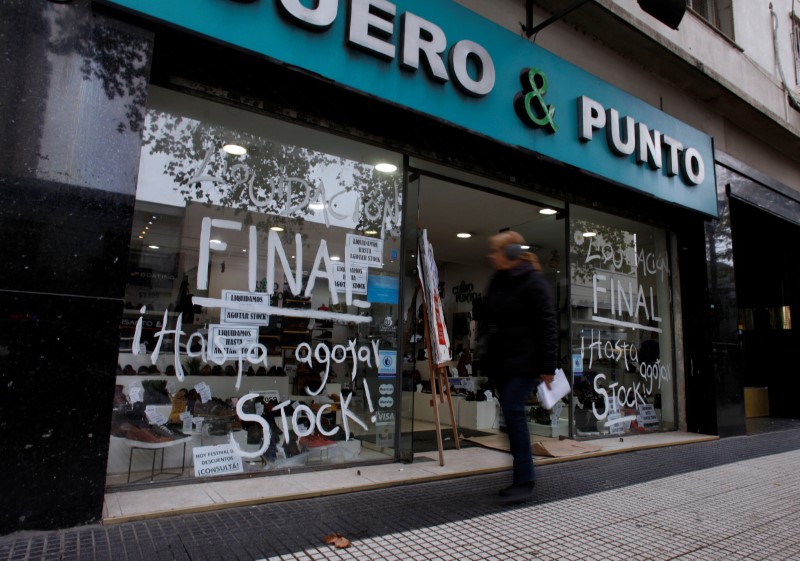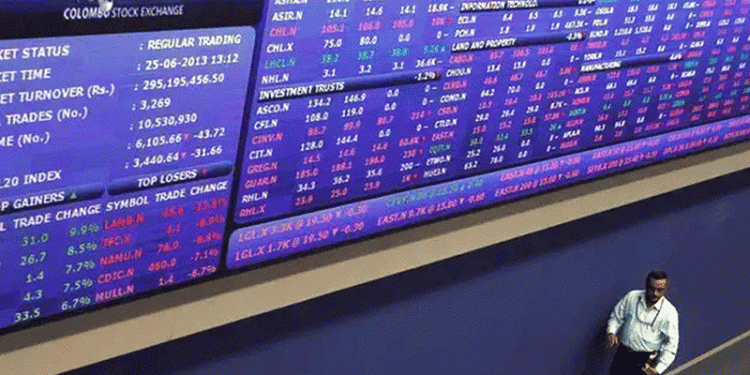 © Reuters. A woman walks past a store that displays signs and grafittis that read “final sale while supplies” in Buenos Aires
© Reuters. A woman walks past a store that displays signs and grafittis that read “final sale while supplies” in Buenos AiresBy Luc Cohen
BUENOS AIRES (Reuters) – Argentina’s economy shrank 5.8 percent in May versus the same month last year, government statistics agency Indec said on Tuesday, the second straight month of declines in a sign of looming recession and a possible GDP contraction in 2018.
The sharpest monthly decline since July 2009 was mostly caused by the grains powerhouse’s worst drought in decades, which harmed soybean and corn crops. Farming activity shrank 35 percent year-over-year, while industrial output fell 1.4 percent and transport and communications fell 4.9 percent.
The drought was one factor behind a run on the peso currency and financial market volatility that prompted Argentina to turn to the International Monetary Fund (IMF) for an emergency loan. Argentina has also suffered from a broader investor pullback from risky emerging market assets.
While the government began the year with rosy forecasts of growth above 3 percent this year after a 2.9 percent expansion in 2017, many analysts began predicting a recession — two straight quarters of negative growth — for 2018 after the country announced in May it was turning to the IMF.
The Fund still expects a slight expansion of 0.4 percent in 2018, and the government says it could be even higher. But May’s decline — which exceeded the median estimate in a Reuters poll for a 1.3 percent contraction — increased the chances that overall growth could be negative despite a strong first quarter.
“We see a very significant risk that the economy will experience a recession in 2018 … and that real GDP (gross domestic product) growth in 2018 will dip into negative territory,” Alberto Ramos, head of Latin America economics at Goldman Sachs (NYSE:), wrote in a note.
Tighter fiscal policy as the government cuts public works spending to reach its deficit targets and high interest rates as the central bank seeks to fight incessant inflation mean the economy would “remain soft in coming quarters,” Ramos wrote.
Construction activity rose 4.4 percent in May, down substantially from the 10.2 percent increase in April, while wholesale and retail commerce rose 0.5 percent compared with 5.5 percent in May. The financial sector grew 10.8 percent and real estate activity grew 4 percent.
Economic activity declined 1.4 percent when compared with April, the data showed.
Indec also revised its estimates for April’s economic activity to a 0.6 percent decline year-over-year, compared with 0.9 percent previously, and a 2.8 percent decline month-on-month, compared with 2.7 percent previously.
Fusion Media or anyone involved with Fusion Media will not accept any liability for loss or damage as a result of reliance on the information including data, quotes, charts and buy/sell signals contained within this website. Please be fully informed regarding the risks and costs associated with trading the financial markets, it is one of the riskiest investment forms possible.
Source: Investing.com



























